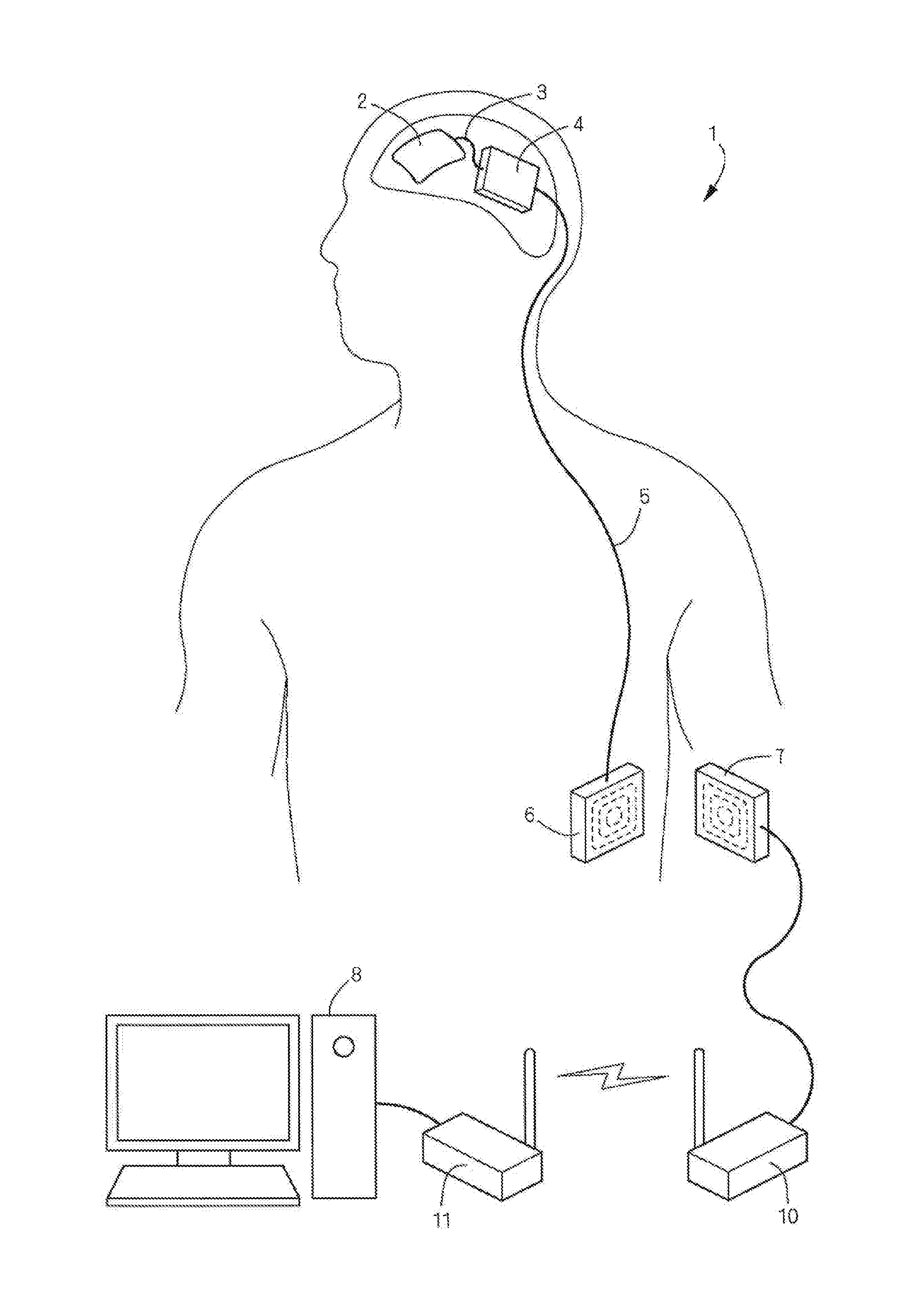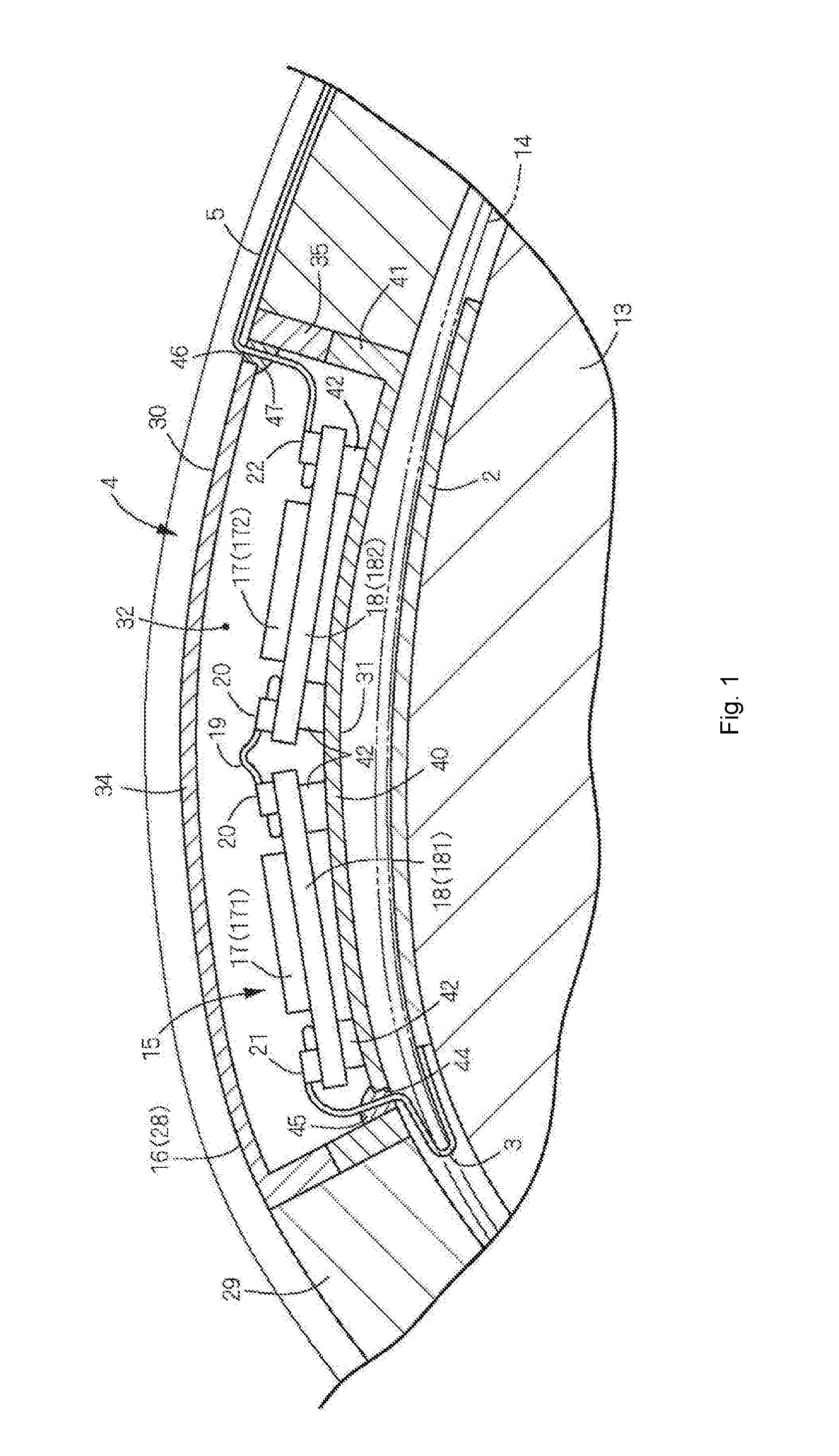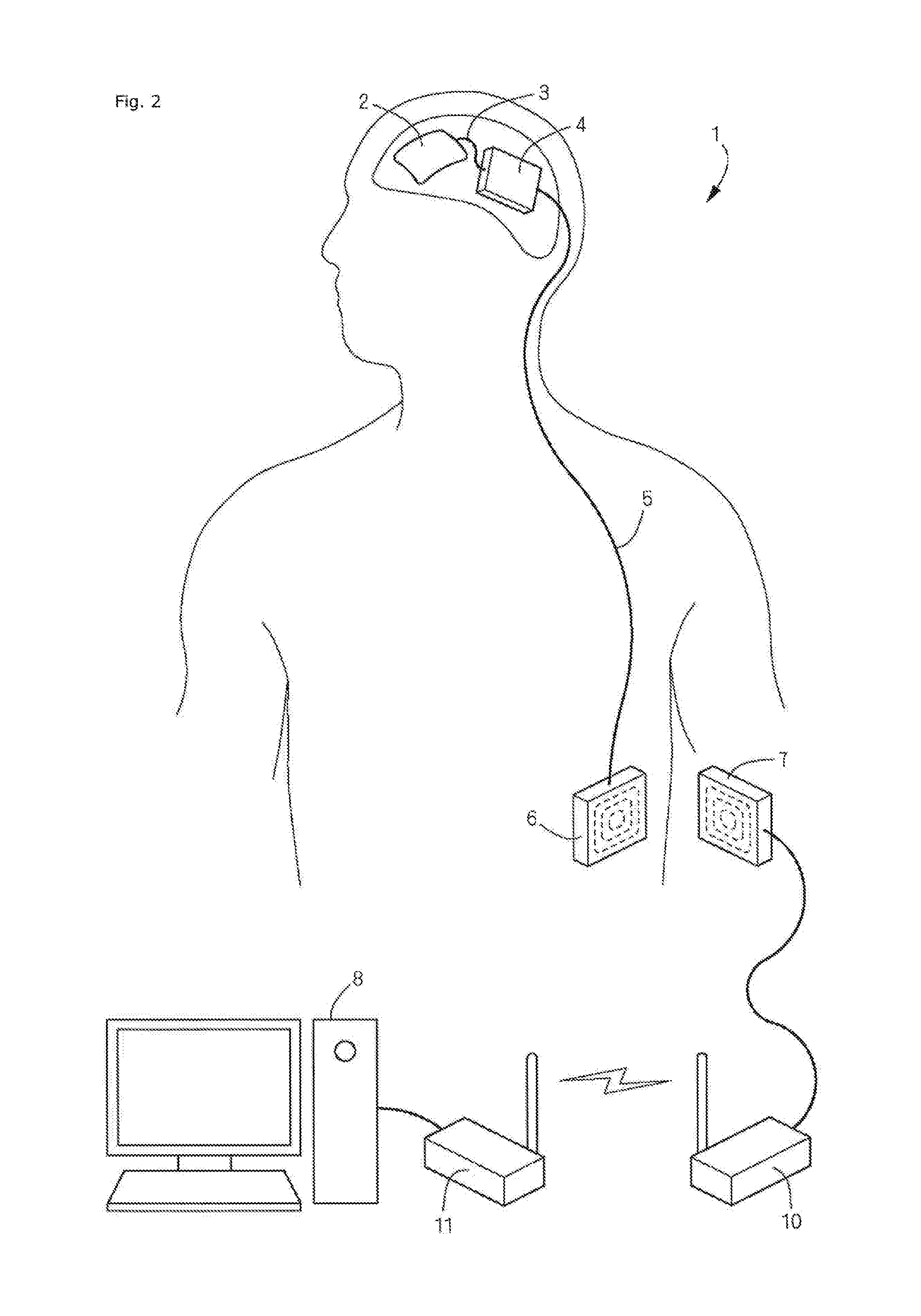Casing of implantable device and implantable device, method for manufacturing casing of implantable device, and method for supporting treatment using implantable device
a technology for implantable devices and casings, which is applied in the field of implantable devices, and the method of manufacturing casings of implantable devices, which can solve the problems of establishing any implantable technology, bulging of devices, and undesirable appearance, and achieves excellent safety, sufficient strength, and sufficient strength.
- Summary
- Abstract
- Description
- Claims
- Application Information
AI Technical Summary
Benefits of technology
Problems solved by technology
Method used
Image
Examples
first embodiment
[0075]FIGS. 1 to 10 show an embodiment where an implantable device according to the present invention is applied to a brain signal measurement system. As shown in FIGS. 1 and 2, the brain signal measurement system 1 is a system for measuring electrocorticograms. It includes a sheet-shaped grid electrode array (function unit) 2 for brain signal (electrocorticogram) measurement, an implantable device 4 connected to the sheet-shaped grid electrode array 2 via an analog cable (cable) 3, an internal transceiver 6 connected to the implantable device 4 via a digital cable 5 and configured to be implanted subcutaneously in the abdomen, an external transceiver 7 wirelessly connected to the internal transceiver 6, and a personal computer (hereafter simply referred to as “computer”) 8 for neural signal processing. Signs 10, 11 represent wireless transceivers 10, 11 laid out between the external transceiver 7 and the computer 8 and forming a wireless LAN. The computer 8 receives a measurement r...
second embodiment
[0087]FIGS. 11 and 12 show a second embodiment of the present invention. The second embodiment differs from the first embodiment in the following point: in the case where when, in designing the layout using CAD, the skull shape of the patient is used as the shape of a casing outer convexity surface 30 as it is, an electronic circuit 15 cannot be laid out within internal space 32 of a casing 16, the outer convexity surface 30 is formed in a manner swelling out slightly outwardly (upwardly in the illustrated example) so as to secure internal space 32 sufficient to incorporate the electronic circuit 15 (FIG. 11). Further, the second embodiment differs from the above-mentioned first embodiment in that the top surfaces of fixing plates 36 are flush with the top surface of an external wall 34 and in that caving depressions 50 to which the fixing plates 36 are to be attached are formed on a skull 29 around a craniotomy site 26 in the shape of notches (FIG. 12). The second embodiment is the...
third embodiment
[0097]FIGS. 14 to 23 show a third embodiment where an implantable device according to the present invention is applied to a brain signal measurement system. This brain signal measurement system is similar to the system according to the above-mentioned first embodiment shown in FIG. 2. It includes a sheet-shaped grid electrode array (function unit) 2 for brain signal (electrocorticogram) measurement, an implantable device 4 connected to the sheet-shaped grid electrode array 2 via an analog cable (cable) 3, an internal transceiver 6 connected to the implantable device 4 via a digital cable 5 and implanted subcutaneously in the abdomen, an external transceiver 7 wirelessly connected to the internal transceiver 6, and a personal computer (hereafter simply referred to as “computer”) 8 for neural signal processing.
[0098]As shown in FIG. 14, the sheet-shaped grid electrode array 2 is disposed under the dural membrane. In this embodiment, it is fixed to the surface of a brain 13 (the surfac...
PUM
 Login to View More
Login to View More Abstract
Description
Claims
Application Information
 Login to View More
Login to View More - R&D
- Intellectual Property
- Life Sciences
- Materials
- Tech Scout
- Unparalleled Data Quality
- Higher Quality Content
- 60% Fewer Hallucinations
Browse by: Latest US Patents, China's latest patents, Technical Efficacy Thesaurus, Application Domain, Technology Topic, Popular Technical Reports.
© 2025 PatSnap. All rights reserved.Legal|Privacy policy|Modern Slavery Act Transparency Statement|Sitemap|About US| Contact US: help@patsnap.com



